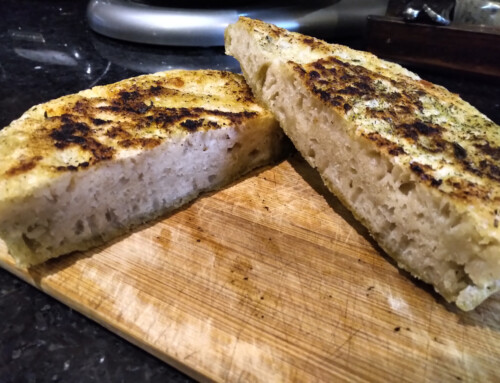 By now, you may have heard about Vitamin D3 or read a ton of information on the health benefits of having optimum levels of Vitamin D (calciferol) or specifically Vitamin D3 (cholecalciferol). It is crazy to think we have to read all this information when we can just apply some common sense. For others, you have not read much but since the doctor mentioned it or perhaps a knowledgeable family member, you either take a Vitamin D3 supplement or keep it tucked away for a winter’s day. Let’s explore what is Vitamin D, some history, how much Vitamin D3 do we need, testing and how to obtain optimum levels. Even then this article is just scratching the surface. Keep on reading for the kicker to this article. Would like to order up a dish Sunshine please!
By now, you may have heard about Vitamin D3 or read a ton of information on the health benefits of having optimum levels of Vitamin D (calciferol) or specifically Vitamin D3 (cholecalciferol). It is crazy to think we have to read all this information when we can just apply some common sense. For others, you have not read much but since the doctor mentioned it or perhaps a knowledgeable family member, you either take a Vitamin D3 supplement or keep it tucked away for a winter’s day. Let’s explore what is Vitamin D, some history, how much Vitamin D3 do we need, testing and how to obtain optimum levels. Even then this article is just scratching the surface. Keep on reading for the kicker to this article. Would like to order up a dish Sunshine please!
“Vitamin D is not actually a Vitamin!”
Two common sense statements. Go play outside. Just don’t lie there. My Mom said them in different ways as I am reminded of the screen door being locked so us kids would play outside until called for – and she did have a good set of lungs which I swear she liked using.
“Fresh air and being physically active are valuable to our well-being.”
Perhaps playing outside in the fresh air included some sunshine and physical activity BUT playing was the key word. How many people today play outside regularly?
What is Vitamin D / Vitamin D3
From what I have read, Vitamin D is not really a vitamin but a seco-steroid hormone produced from cholesterol. It is not essential because our body can make it via our skin from having sunlight or ultraviolet light (UVB radiation) interact with cholesterol. From there it needs to convert to other molecules, one being Vitamin D3. Vitamins are defined as essential as in our body does not produce it. The question is ‘Is our body getting enough Vitamin D and its products such as Vitamin D3 (the natural Vitamin D for higher animals and man not Vitamin D2)?’
The valuable piece of the well-being puzzle is that we get enough sunlight and we are converting Vitamin D to the active form which is Vitamin D3. When we get enough we have healthy bones where it is helping with the absorption of calcium but inclusive of all minerals (mineral metabolism). Vitamin D3 has a role in many other areas including activation of the immune system, pancreatic function with the secretion of insulin, with muscle strength including the heart muscle, and blood pressure regulation. When any of these functions are faced with a Vitamin D deficiency it would have an impact when the deficiency is great enough, it is called rickets. As well, if the immune system was compromised with low Vitamin D3, you can see how easy it would be to catch a cold or get the flu.
“Our findings indicate that Vitamin D is associated more closely with glucose metabolism than obesity…The study suggests that Vitamin D deficiency and obesity interact synergistically to heighten the risk of diabetes and other metabolic disorders. The average person may be able to reduce their risk by maintaining a healthy diet and getting enough outdoor activity.” Dr. Mercola
Vitamin D3 History
History has indicated an awareness of Vitamin D since early antiquity. In the 17th century, the first scientific description of Vitamin D deficiency was named, rickets, by Dr. Daniel Whistler (1645) and Professor Francis Glisson (1650). Skipping to the period of 1910-1940, they discovered that by historical accident it was named a vitamin but not a vitamin at all. It was a steroid hormone. Fats were a carrier of this nutrient, such as cod liver oil making Vitamin D a fat soluble nutrient. The name Vitamin D still remains.
Cholesterol is required to make Vitamin D3
How Much Vitamin D3 Do We Need?
Enough. Health Canada gives these recommendations. The nutritional supplements are only allowed to recommend 1000 IU per day. Perhaps Health Canada believes the people would get the balance of Vitamin D from the sun or from other natural food sources or from fortified foods such as milk.
| The DRIs for vitamin D | ||
| Adequate Intake rather than Recommended Dietary Allowance. | ||
| Age group | Recommended Dietary Allowance (RDA) per day | Tolerable Upper Intake Level (UL) per day |
| Infants 0-6 months | 400 IU (10 mcg) | 1000 IU (25 mcg) |
| Infants 7-12 months | 400 IU (10 mcg) | 1500 IU (38 mcg) |
| Children 1-3 years | 600 IU (15 mcg) | 2500 IU (63 mcg) |
| Children 4-8 years | 600 IU (15 mcg) | 3000 IU (75 mcg) |
| Children and Adults 9-70 years |
600 IU (15 mcg) | 4000 IU (100 mcg) |
| Adults > 70 years | 800 IU (20 mcg) | 4000 IU (100 mcg) |
| Pregnancy & Lactation | 600 IU (15 mcg) | 4000 IU (100 mcg) |
In comparison, Dr. Mercola interviews Dr. John J. Cannell where 0-4 is 35 IU per pound per day, children ages 5-10 is 2,500 and adults/pregnancy is 5,000 units per day. The values are similar in the tolerable upper intake level per day. When it comes to taking too much Vitamin D3, I was told by the doctors at the University of Toronto that there is no concrete science to say what too much is at this time.
Rickets, A Vitamin D3 Deficiency
In the last 20 years, there have been cases of rickets in North America. The area of most importance is for developing infants.
The requirement for Vitamin D3 depends on the amount of sunlight taken on the skin. These various factors could stop this from happening:
- how much time is spent outdoors when there is available sunlight
- how much skin is exposed as most in North America will cover up with clothes
- the geographical region can limit the amount of available sunlight
- if living in the city, tall buildings would block out the sunlight
- synthetic sunscreen blocks out the ultraviolet light
- the sunlight can be blocked out by pollution
Here’s the kicker and it will be a big one. It reminds me of a conversation I had when meeting Patch, Founder and Owner of GoodLife Fitness. We were talking about the Auum Omegas then about the Vitamin D in the oil. I told him about something I heard. Washing your body with soap 1-2x per day could wash away the opportunity for your skin to produce Vitamin D. You don’t believe me?
A Shower a Day Might Wash the Vitamin D Away
Helmer AC, Jensen CH: Vitamin D precursors removed from the skin by washing. Studies Inst Divi Thomae 1937, 1:207-216.
The authors concluded, “The evidence presented in the two groups of experiments indicates that washing the human skin by the usual methods removes vitamin D and its precursors from the outer layer of the skin. There is definitive evidence that the secretions from the skin contains precursors of vitamin D, which after irradiation are to be reabsorbed by the body, and the removal of which tends to produce a death of the vitamin unless it be supplied in some other form.”
What about Bathing?
Are you taking a daily shower maybe two? When you take a shower you don’t necessarily need to lather every body part. There are the key ones if you get my drift. Consider lowering the water temperature most of the week and give yourself the one or two hot shower days in the week. Then again you could consume a Vitamin D supplement all of the time while doing your best to get some sunlight on a weekly basis as Vitamin D3 can store in your body.
There are questions to be answered. Does the temperature of the water make a difference? How long should one wait to have a shower after some sunlight exposure? The natural oils will be stripped away under hot water and scrubbing so if it is true that Vitamin D production begins on the surface of the skin this would impact how much Vitamin D we are actually producing from the sunlight. I have read anywhere from 24-48 hours for our skin to produce natural Vitamin D. Even if it were just 24 hours most would have to plan a day or two without a hot water soap lathering shower. How can you know if you are doing the right or wrong thing?
Vitamin D3 Testing
Testing for Vitamin D3 will be the true marker. You will be able to see how what you are doing is working for maintaining optimum Vitamin D3 levels. It would be ideal for you to know. Depending on your country, there are two measurements for Vitamin D3 levels. One is ng/ml and the other is nmol/litre. To convert ng/ml to nmol/litre multiply the former by 2.5. The normal range is 50-70 ng/ml or 125-175 nmol/litre. I recommend you take your test early spring so you can see how you did over the winter with your routine of sunlight and supplementation.
Summary and Recommendations
Obtaining optimum levels of Vitamin D3 for good health requires mainly exposure from sunlight with the insurance of taking a natural form of Vitamin D3 supplementation. For those that consume such foods as fatty fish, eggs, beef, butter and other animal foods, they would be consuming some Vitamin D3 from their food. Of course, if you cook the foods (and depending on the food and how you cook it), some will be destroyed.
After a sun KISS at high noon, a dip in the cool lake waters sounds like the recipe for producing Vitamin D3 naturally. Next to this, intake a Vitamin D3 supplement as a natural oil from 1,000 to 4,000 IU daily depending on the various factors above. A higher amount of Vitamin D supplementation would be needed during the days with little sunlight considering skin tone and amount of time spent indoors.
Note: A Vitamin D3 deficiency is not the only culprit for Rickets.
Why Vitamin D3 is added to Omegas
References
http://vitamind.ucr.edu/about/
http://www.hc-sc.gc.ca/fn-an/nutrition/vitamin/vita-d-eng.php#a10
Vitamin D Retention in Cooking https://www.ncbi.nlm.nih.gov/pubmed/24262542
Photo Credits
Vitamin D – Josephine Armstrong (my daughter)
Jumping in Lake https://gloriadeionline.wordpress.com/2014/03/26/week-9-do-i-invest-myself/
Title Credit goes to Queen’s hit song ‘Crazy Little Thing Called Love’

Cheryl Millett
Champion for your better health…
Before the age of 20, it never dawned on me that what I chose to put in my mouth would have such a dramatic effect on my wellbeing.
On my path of discovery, I learned that our eating choices directly affected how much energy we have first thing in the morning or that it would build our immune system strength during flu season. Part of it was coming to understand how gentle nutritional cleansing directly helped overcome my health challenges. People keep telling me how beautiful my skin is or how I look younger.
As my studies continued, it became obvious that there is an intrinsic connection between the mind, body and spirit which directly affects our health and happiness. Also learned that Omegas are another critical piece of the wellness puzzle. I became convinced when the Auum omegas alone turned on some switches in my brain in just one day.
I have developed a deep appreciation for the wonderful miracle workers our bodies are in the recovery process. Our bodies have a natural intelligence. I am passionate to share the connection between nutrition and wellness in my practice and my presentations.







